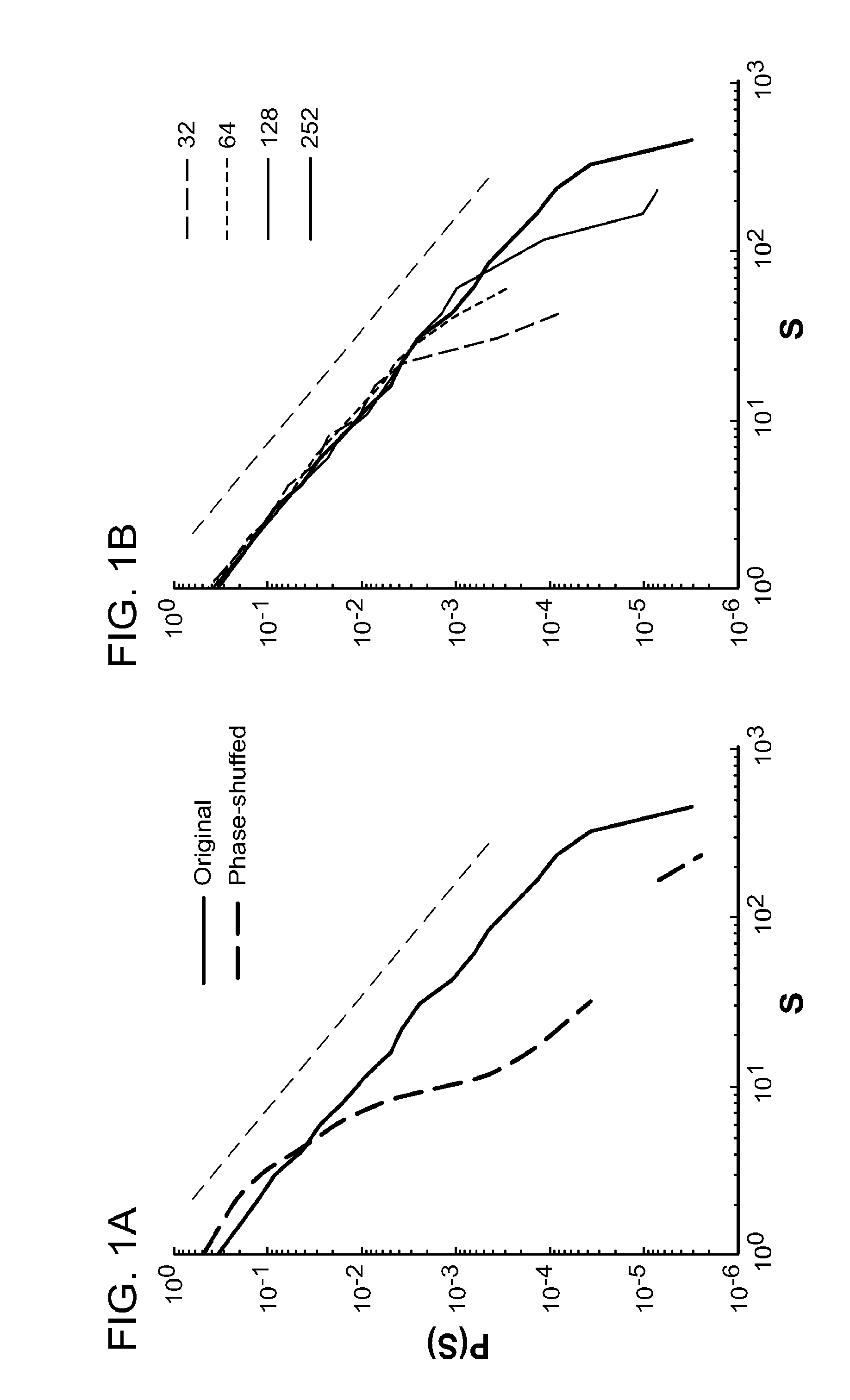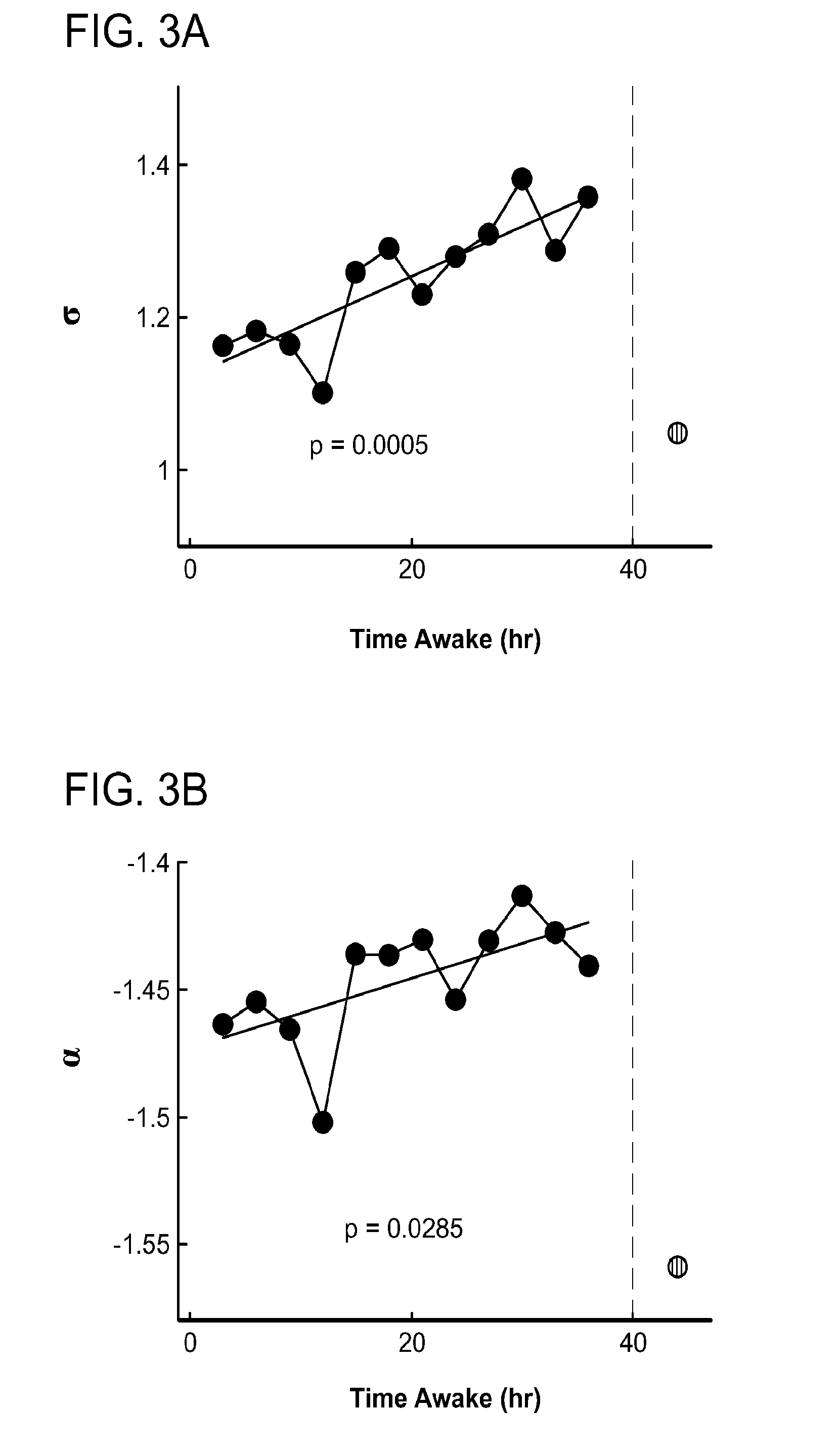Monitoring the effects of sleep deprivation using neuronal avalanches
a technology of sleep deprivation and neuronal avalanches, which is applied in the field of sleep and sleep deprivation, can solve the problems of over-excitation of brain networks, imbalance between excitation and inhibition, and deprivation from sleep-related cognitive effects, so as to achieve the effect of reducing behavioral and cognitive performance and reducing behavioral performan
- Summary
- Abstract
- Description
- Claims
- Application Information
AI Technical Summary
Benefits of technology
Problems solved by technology
Method used
Image
Examples
example 1
Neuronal Avalanches and Sleep Deprivation
[0100]The present invention is based, in part, on the hypothesis that neuronal avalanche dynamics may be used to assess the effect of sleep deprivation in single subjects by following changes in metrics such as the avalanche exponent, α, and the branching parameter, σ, over time. This hypothesis was tested with high density EEG (hd-EEG) recordings from human subjects during 36 hrs of sleep deprivation. It was found that indeed both avalanche metrics correlated with sleep deprivation and corresponding decrease in behavioral performance.
[0101]First, neuronal avalanches were looked for in the baseline recordings. FIG. 1A depicts the distribution of avalanche sizes from a single subject (solid black curve; Δt=6 ms), showing a clear power law behavior (broken black line represents a reference power law with an exponent of −3 / 2). A maximum likelihood based analysis (see Materials and Methods; [21,22]) demonstrates a significantly better fit to a po...
example 2
Changes in Neuronal Avalanches During Sustained Wakefulness in Humans and Rodents
[0117]Described herein is a rat model of sleep deprivation. Using invasive recording technology and behavioral paradigms, it was demonstrated in the rat model that avalanche metrics change as a function of time awake as reported in humans.
[0118]The rat model was utilized to demonstrate that cortical dynamics in rats become supercritical, i.e., move away from avalanche dynamics, with prolonged sleep deprivation, which is congruent with the results presented for humans in FIG. 3A-FIG. 3F.
[0119]Sleep has been suggested as a homeostatic regulatory process that rebalances cortical excitability increased during wakefulness (Huber, R. et al. 2013 Cereb Cortex, 23: 332-338; Tononi, G. & Cirelli, C. 2003 Brain research bulletin, 62: 143-150). The dependency of avalanche dynamics on the E-I balance (Shew et al., 2009 J. Neurosci., 29: 15595-15600; Shew et al., 2011 J. Neurosci.; 5: 55-63) predicts a progressive d...
PUM
 Login to View More
Login to View More Abstract
Description
Claims
Application Information
 Login to View More
Login to View More - R&D
- Intellectual Property
- Life Sciences
- Materials
- Tech Scout
- Unparalleled Data Quality
- Higher Quality Content
- 60% Fewer Hallucinations
Browse by: Latest US Patents, China's latest patents, Technical Efficacy Thesaurus, Application Domain, Technology Topic, Popular Technical Reports.
© 2025 PatSnap. All rights reserved.Legal|Privacy policy|Modern Slavery Act Transparency Statement|Sitemap|About US| Contact US: help@patsnap.com



